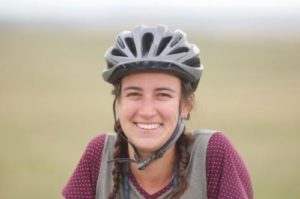 What a way to get to know a place! As we grilled local bison burgers last night, I was telling Melissa, one of our generous hosts in Choteau, about our trip. She said she bets we are getting to know the state of Montana better than a lot of Montanans do. We would probably need some more time here to really get to know the culture of different Montanan towns (likely requiring some off-course time in the bars). However, it seems like we’ve gotten a pretty full perspective on the state’s energy systems.
What a way to get to know a place! As we grilled local bison burgers last night, I was telling Melissa, one of our generous hosts in Choteau, about our trip. She said she bets we are getting to know the state of Montana better than a lot of Montanans do. We would probably need some more time here to really get to know the culture of different Montanan towns (likely requiring some off-course time in the bars). However, it seems like we’ve gotten a pretty full perspective on the state’s energy systems.
The education we’ve gotten on the topic of energy was made possible by the multi-faceted educational approach that WRFI has set out for us. In our 472 pages reader that we each drag across the state, we read opinion articles, energy reports, novel excerpts, and even journalistic articles by our own instructor, Matt Frank. We give Matt a hard time for including 75+ pages of his writing that we’re assigned to read, but I think that having our course leaders be so engaged in the issues we’re learning about is one of the coolest part of this course. This trip in some ways has felt like we’re collecting a big set of data and research for a journal article.
I’ve been amazed by the effectiveness of the structure of this course. The most influential part for me so far has been meeting with people with all sorts of perspectives on these issues. We had a discussion with a self-proclaimed environmentalist who is passionately “pro-coal” due to her devotion to her coal-dependent small town of Roundup. We were treated to breakfast by Alan Olson, the executive director of Montana Petroleum Association, at Jorgenson’s- the place where (rumor has it) the big-wigs meet in the bar to make under-the-radar plans for new legislation. We sat in a snazzy meeting room in the Montana Department of Environmental Quality and discussed their recently released “Blueprint for Montana’s Energy Future” and the possible return of the Clean Power Plan. Later that afternoon, we heard from Anne Hedges of Montana Environmental Information Center about their lawsuit filed against the DEQ. I don’t know of a time other than on a WRFI course that I’d have the opportunity to meet with such a variety of influential figures in the industry we are studying. I’ll keep this in mind in future research projects of my own as an important way to gather multiple people’s perspectives. Despite the potentially differing political or ethical views between the people in our meetings, every discussion has been pleasant and informative.
Anyway, we’re getting to know Montana energy pretty well. Actually, it’s to a point where my knowledge of what’s going on in the energy industry in Maine — the state I call home — is feeling pretty lame. While I feel a deep connection to the place itself due to time spent exploring certain areas of coastline and weaving through the Eastern Hemlocks and Balsam Firs in Maine’s forests, maybe it’s time to take a bike tour across the whole state and see what I’m missing out on. For example, I recently learned that 26% of Maine’s electricity generation comes from biomass- I’d like to find out more about the wood products that are being burned. What part of trees is most often burned? Are they doing anything to offset the damage done by cutting down trees- such as planting new ones? By the time these new trees sequester carbon out of the atmosphere, will it be too late? These are just a few of the questions I have about Maine’s renewable energy, and I’d like to look into the answers by chatting with people across the state. After Cycle the Rockies, maybe I’ll have the confidence to take Shwayze (my beloved Trek 520 touring bike) for another spin in a whole new part of the country.